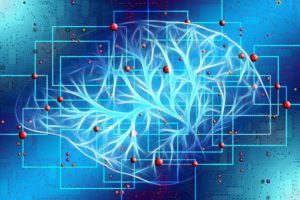Three companies – Samsung, IBM and Tencent – dominate the global AI patent race over the past 10 years, while fierce competition between the U.S, and China overshadows other countries and regions, including the EU.
 These are the key findings of OxFirst, a specialist in IP law and economics (and spin out of Oxford University), which also reported that multiple neural nets, machine learning and speech recognition are driving the market.
These are the key findings of OxFirst, a specialist in IP law and economics (and spin out of Oxford University), which also reported that multiple neural nets, machine learning and speech recognition are driving the market.
“Patents are mainly filed in the area of interconnectivity and system architecture, suggesting that top players focus primarily on protecting technologies covering multiple neural nets,” OxFirst said in its announcement today. “Other areas of crucial importance are ML and bootstrap methods, alongside procedures used during speech recognition processes; e.g. the further establishment of human-machine dialogue.”
OxFirst said its sector-specific analysis suggests that major companies have focused on AI in the medical space, particularly medical diagnosis, medical simulation and data mining.
Companies
OxFirst categorized Samsung, IBM and Tencent as “the most important patent owners in AI” and said Korea-based Samsung “by and large dominates the space” with more than 5,000 patents worldwide. The organization also noted that “no European company can be found among the top 20 patent owners.”
Company Patent Count:
Samsung Electronics: 5,073
IBM: 2,062
Tencent: 2,062
LG Electronics: 1,541
Microsoft Technology: 1,388
Baidu: 1,221
State Grid Corp., China: 1,027
AT&T: 941
Ping An Tech, Shenzen: 802
Intel: 746
Countries
Looking at patents by country, OxFirst stated that “the fight for market share in the AI space is clearly reflected in the geographical assessment of patents. China, the U.S. and the Republic of Korea report most patent filings. Compared to the over 100,000 filings with the Chinese Patent Office, the barely over 5,000 patents filed with the European Patent Office appear negligible in comparison.
OxFirst noted legal limitations in some regions, noting that in the EU, the European Patent Convention has imposed restrictions on software patents, while the U.S. Supreme Court’s decision in Alice Corp. v. Cls Bank established boundaries on the eligibility of patent protection for software. “Arguably, Chinese patent law may offer further scope for patent protection,” OxFirst said.
Countries Patent Count
China (SIPO): 106,650
United States (USPTO): 60,003
World Intellectual Property Organization (WIPO): 20,407
Republic of Korea (KIPO): 12,897
Japan (JPO): 9,682
European Patent Office (EPO): 5,201
Australia (AU): 3,715
Canada (CA): 2,702
Taiwan (TW): 682
Great Britain (GB): 535
“This data suggests that companies are recognising the economic potential of patents,” said Dr. Roya Ghafele, executive director of OxFirst. “The analysis helps assess how different patent owners perform in comparison to each other and how the patent space is distributed among them. Match this against a patent licensing rate of 15 percent, which can be caught across the sector and it becomes evident that even a small fraction of the patents in this space could offer attractive financial returns. This can be achieved by either trading the patents directly or indirectly.”
OxFirst noted that AI patent landscape has cooled from its 2017-18 peak, when ML patent applications increased by more than 68 percent compared with the rest of the decade starting 2010.




